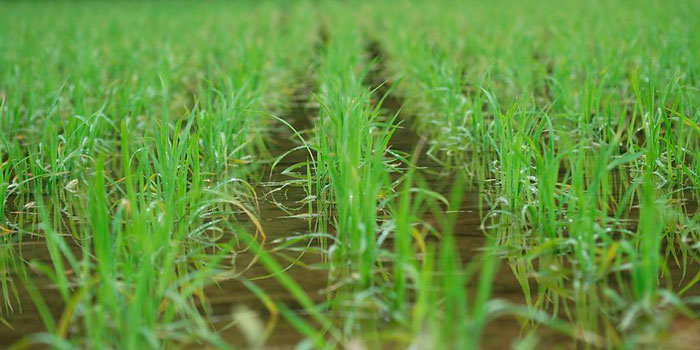Wannian Traditional Rice Culture, China
GIAHS since 2011

Site location: Wannian County in Jiangxi Province, P. R. China
Area of GIAHS: 200 ha
Population working for this system: 310 000 people
Ethnic Groups/Indigenous People: Wannian
Primary Income Sources: agriculture
-------------------------------------------------------------------------------------------
Global importance
There is no doubt that Wannian County is one of the origins of rice cultivation. Wannian traditional rice has the remarkable characteristics of wild rice and belongs to early cultivation rice variety. This kind of rice formerly called “Wuyuanzao” and commonly known as “Manggu”, has been cultivated in Heqiao Village since the North and South Dynasty. It was tested and verified that the rice can be only grown under the combination of certain water, soil and climate condition in Heqiao village. This traditional variety is the result of a long selection by the farmers. The rice culture is closely related to farmers’ daily life, expressed in their customs, food but also participate to the preservation of an important biodiversity linked to this agro-forestry system.
Nowadays, several issues could threaten the sustainability of this system mainly due to policy which includes returning farmland to forests and the extension of hybrid rice. In addition, mineral development around Xianrendong and Diaotonghuan sites has negative impact on the sites and their surrounding environment.
Food and livelihood security
Rice is the staple food in this area. Planting Wannian traditional rice can provide food for local people. Besides, there is no chemicals utilization during the rice growth which increases the quality of food security. Working in rice cultivation is part of farmers’ livelihood security even if traditional varieties are progressively abandoned.
Wannian traditional rice has high nutritional value. It contains more protein than ordinary hybrid rice and is rich in microelements and vitamins which are good for people’s health.
Biodiversity and ecosystem functions
Wannian traditional rice and Dongxiang wild rice contain anti-disease, anti-insect, anti-adversity genes and other advantageous genes, especially the cold resistant gene. From a macro point of view, the unique growing environment of Wannnian traditional rice forms an agroforestry system that is rich in biodiversity for many wild species including plants, insects and reptiles. Moreover, forests on the hills around the paddy fields prevent soil erosion and reduce risks of landslides and floods. The paddy fields with forests on its slope serve as watershed to store excessive water and reduce the risk of floods.
The system also plays the role of climate regulation and carbon sequestration. Powered by solar energy through photosynthesis, the biodiversity in Wannian traditional landscape converts carbon dioxide into bio-resources to meet local subsistence needs for food (crops), fertilisers (forest litter and straw).
Knowledge systems and adapted technologies
According to research, Wannian Rice requires special water, soil and climate condition. Only Heqiao Village can meet the requirements. As Wannian traditional rice needs perennial cold spring water for irrigation, the surrounding forests play a crucial role in soil and water conservation. The forests and paddy fields form an agro-forestry system which has a rich biodiversity.
Meanwhile, the traditional rice is resistant to insects and adapted to poor soils. Hence farmers do not need to use chemical fertilizers and pesticides. With the improvement of the long-term cultivation practice, Wannian people have documented their experiences in rice seedlings preparation and transplanting, field management, harvests storage and processing.
Cultures, value systems and social organizations
Wannian County has a long history and splendid ancient civilization. The rice culture has been developed in the concentrated expression of the folk custom, food, language the national characteristics, and the local rice culture is extremely rich. The rice culture is closely related to people’s daily life of farming and managing traditional knowledge and culture transmission.
Remarkable landscapes, land and water management features
Due to the rice cultivation lasts in the Wannian County for millennia, the landscape has been shaped by farmers’ hands which includes not only paddies but also forests and habitations. This landscape is particular and totally the results of farmers’ interest for traditional rice cultivation.
Concerning the soil and water management, forests on the hills around the paddy fields prevent soil erosion and reduce risks of landslides and floods. The paddy fields with forests on its slope serve as watershed to store excessive water and reduce the risk of floods.

